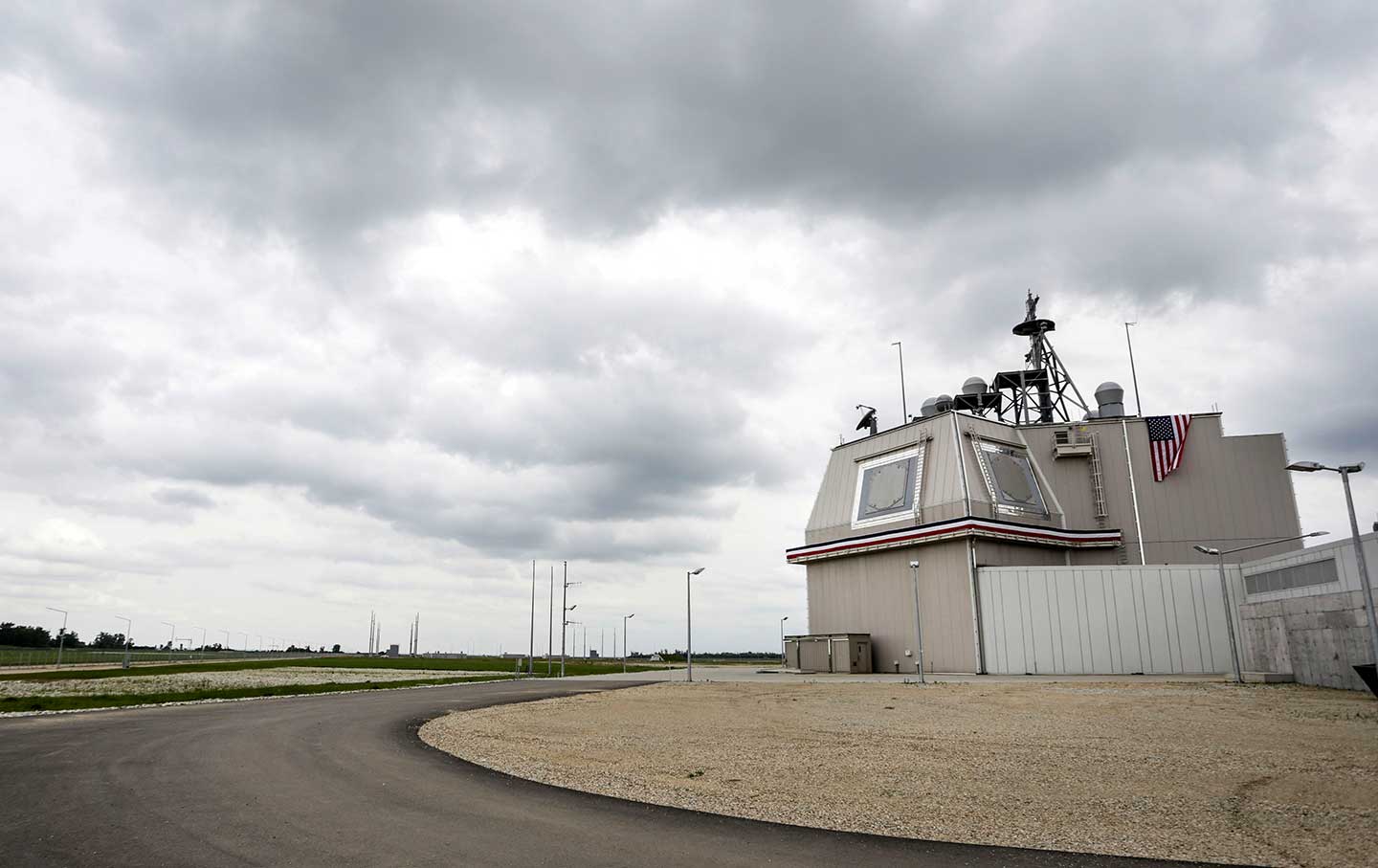
The deckhouse of the Aegis Ashore Missile Defense System (AAMDS) at Deveselu air base, Romania, May 12, 2016. (Inquam Photos / Adel Al-Haddad / via Reuters)
A recent Sunday New York Times editorial bemoaned the Trump administration’s decision to abandon the landmark Intermediate-Range Nuclear Forces Treaty, which was signed 31 years ago last month by Soviet General Secretary Mikhail Gorbachev and President Ronald Reagan. The treaty, as the Times correctly notes, “eliminated an entire class of weapons, some 2,692 ground-based missiles that can fly in the range of roughly 300 to 3,000 miles and their launchers.”
Yet the Times editorial board, while right to decry the seeming lack of interest in a sustained diplomatic effort on the part of the Trump administration to save the treaty, failed to properly explain the core of the dispute between Russia and the United States over the question of compliance.
According to the Times, the core of the dispute involves Russia’s development of SSC-8 land-based cruise missiles, which American officials say are capable of carrying both nuclear and conventional warheads and have been “tested at a distance of between 300 and 3,000 miles, the range prohibited by the [INF] treaty.”
For its part, Russia points to the American deployment of Aegis missile defense installations in eastern Europe as potential treaty violations. The Times asserts that Moscow’s fear that the Aegis systems “could be used to launch offensive intermediate-range missiles,” in violation of the INF, is disputed by “most independent experts.”
And while there are certainly important questions about the conduct of both sides with regard to INF compliance, it is wrong for the Times to quote unnamed “experts” as proof of that the Russians are wrong on this particular matter.
Here are some facts that the Times decided not to share with its readers.
The US Navy’s Aegis Ballistic Missile Defense System consists of a powerful electronically scanning radar and an arrangement of roughly 64 missile-carrying canisters. When installed in their “so-called Aegis Afloat” configuration aboard a ship, these 64 missile-carrying canisters sit vertically within the hull in a single large assembly of eight prefabricated standardized modules that contain eight canisters each. These standardized vertical canisters and canister modules are by design configured to launch antiaircraft, antimissile, and cruise missiles.
The United States has deployed one land-based “Aegis Ashore” missile-defense system in Romania and is in the process of deploying another in Poland. The initial installation in Romania has 24 missile-carrying canisters in three prefabricated eight-canister modules, but could quickly be expanded to well over a hundred, or possibly even hundreds, of missile launchers by simply adding prefabricated eight-canister modules. These installations simply take all of the standardized components that would normally be part of an Aegis-armed ship and install them in ground locations. The military alleges that the Aegis system does not violate the INF, because the system lacks “the software, fire control hardware, support equipment, and other infrastructure” needed to launch offensive cruise missiles—but the modifications needed to make the system cruise-missile-ready are relatively simple and could be easily accomplished. Such cruise missiles would have characteristics rather close to those of the Russian SSC-8s.
The Russians have rightly raised questions about the possibility that the Aegis Ashore system could constitute a preparatory violation of the INF Treaty. Russian concerns are further supported by the fact that the Aegis radar is not up to the job of identifying attacking long-range ballistic missiles at long enough ranges to allow enough time for missile-defense interceptors to reach intercept points. It therefore appears—from a technical point of view—that the Aegis ashore system has little or no true missile-defense capabilities against long-range missiles.
Indeed, the Department of Defense has published unclassified studies that raise questions about the Aegis system’s capability to engage long-range missiles, because of its highly inadequate radar. The Aegis Ashore system contains all of the unmodified components of the Aegis system that, as configured for missile defense, could also launch cruise missiles with simple modifications. If Russia deployed such systems on its borders with Europe, there is absolutely no doubt that the United States would raise questions about such actions.
The political situation with Russia is more dangerous than ever, and there are certainly reasons to be concerned with Russian behavior. However, it would be good if the “independent experts” whom The New York Times relied upon, and the Times itself, were to also ask whether the American side did something to provoke the Russians. This is not an idle question at a time when the danger of an accident leading to nuclear war increases daily while each side continues to talk past the other.
Theodore A. PostolTheodore A. Postol is professor emeritus of science, technology, and national security policy at the Massachusetts Institute of Technology.